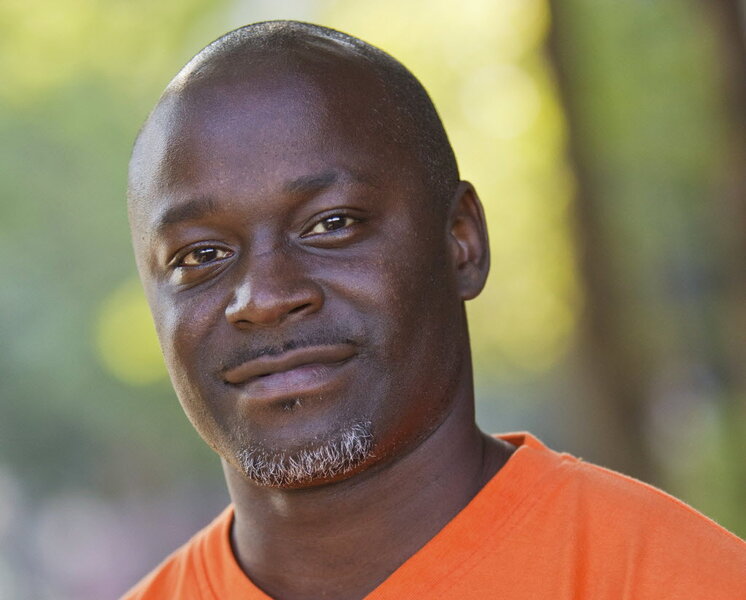Exonerations climb in US, as prosecutors, police probe wrongful convictions
Loading...
Exonerations in the US have reached the highest number in 25 years, in large part because prosecutors and law enforcement officers are increasingly willing to revisit convictions for possible errors, according to a report released Tuesday by the National Registry of Exonerations, a program led by two American law schools.
Eighty-seven people wrongly convicted of crimes were exonerated last year, up from 83 in 2009. It's the highest total since in 1989, when data were first available.
Though it is difficult to pinpoint what led to the increase, the report suggests that the uptick is associated with a subtle change in the legal climate in the US, in which prosecutors and police are investing more time and resources in reviewing cases for evidence of wrongful convictions, often correcting the wrongdoing of predecessors.
During the past 25 years, almost 60 percent of the wrongful convictions for homicide in the US are associated with official misconduct, according to data from the report. Moreover, 17 percent of those exonerated originally pleaded guilty. In most cases, the defendant had accepted a plea bargain for a reduced sentence. In other incidents, the exonerated convict had been a victim of coercive interrogation techniques.
The report finds that about 37 percent of exonerations in 2013 either were initiated by police or prosecutors or included law enforcement’s cooperation, the second-highest percentage since 1989. In 2012, 49 percent of all exonerations were brought about by police/prosecutor efforts.
The report also spotlights the rate at which district attorneys nationwide are investing in ‘‘conviction integrity’’ units – departments charged with poring over old cases for flubs. Counties in Dallas, Chicago, New York, and Santa Clara, Calif., are among those to recently create such units, according to the Associated Press.
“Police and prosecutors appear to be taking increasingly active roles in reinvestigating possible false convictions, and to be more responsive to claims of innocence from convicted defendants,” the report concludes.
The report, complied annually by the University of Michigan Law School and Northwestern University School of Law, is part of a long-term effort to document exoneration trends. In total, the project has counted 1,309 exonerations since 1989, mainly due to discoveries of false witness identification, perjury, and police or prosecutor wrongdoing.
On average, the crime for which the person was exonerated in 2013 had occurred about 12 years earlier. Almost half of the exonerations, 40, overturned murder convictions; another 18 were for sexual assault or rape; and 29 were for nonviolent crimes, primarily drug convictions.
In one case highlighted in the report, David Ranta was wrongfully convicted in 1991 for the murder of a Brooklyn rabbi. He was exonerated 22 years later after the Kings County Conviction Integrity Unit found that police had bribed and coerced witnesses into testifying against him.
In another case, 17-year-old Daniel Taylor was sentenced to life in prison for the murder of two people, a prostitute and a drug dealer, in Chicago – despite police reports showing that he had been in police lockup during the murders, after being picked up for fighting in a park. Mr. Taylor, who was implicated by two teenaged drug dealers, confessed to the murder after hours of police interrogation. Police later scrubbed the report showing that he could not have committed the crime. He was exonerated after a series of Chicago Tribune articles alleging gross police misconduct in the case – and after spending some 20 years in prison.
In 22 percent of the 2013 exonerations, no crime had, in fact, occurred: The murder had been an accident, no rape or sexual assault had taken place, or the exonerated convict had been framed for a fabricated drug crime. That’s up from 2012, when 19 percent of the exonerations had been for crimes that turned out never to have happened.
The report also shows a decline in the number of exonerations that involved DNA evidence, from 23 in 2005 to 18 in 2013. At the same time, there has been an increase in non-DNA exonerations, up from 34 in 2005 to 69 in 2013. DNA exonerations represented just a fifth of the total exonerations in 2013.
The study’s authors said the decline in DNA-based exonerations is a positive sign that police and prosecutors are willing to return to difficult cases if there is no hard, biological evidence – most cases do not include DNA evidence – to substantiate innocence.
Texas led the nation in exonerations, with 13 discovered wrongful convictions in 2013. Illinois (nine), New York (eight), Washington (seven), and California (six) were also high on the list.







